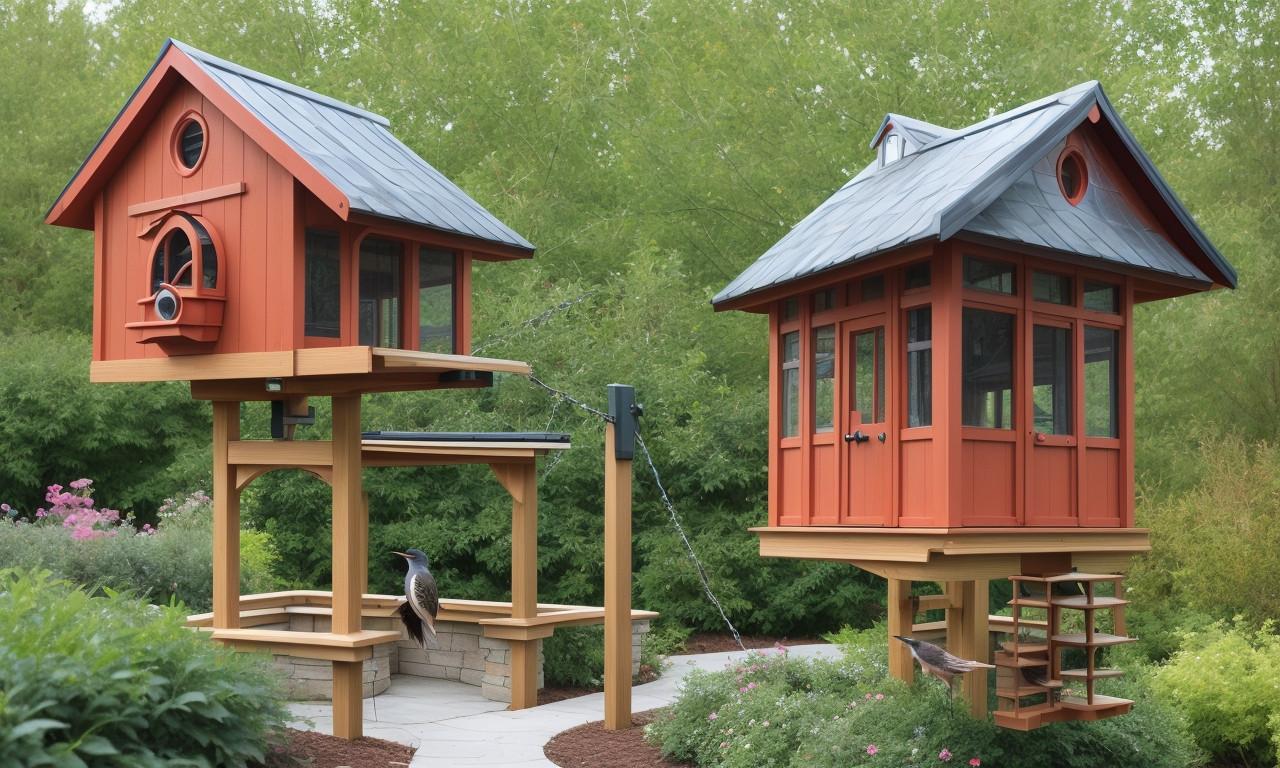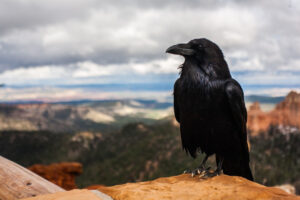Have you ever stood still in your garden, catching the mellifluous symphony of bird songs, wishing you could attract a diverse range of feathered visitors to your backyard oasis? Unveil the secret of drawing an assorted avian population to your garden through the simple yet whimsical world of platform bird feeders. Offering an open invitation to birds of all shapes and sizes, these feeders provide a stage for nature’s ballet, with wings fluttering and colors blending into a breathtaking sight.
By transforming your outdoor space into a welcoming banquet for winged guests, you can enjoy the daily theatre of chirps and flutters while contributing to bird conservation. Join us on a journey to explore how platform bird feeders can become the cornerstone of your garden’s allure, enticing a kaleidoscope of birds you’ve only ever dreamed of seeing up close.
The Allure of Platform Bird Feeders in Avian Attraction
To comprehend why platform bird feeders are so effective in attracting a variety of birds, it’s important to scrutinize what sets them apart from their avian-dining counterparts.
Related article; Heaviest Flying Birds in the World
The Design Appeal: A Welcoming Table for All
Platform bird feeders, often referred to as tray feeders or fly-through feeders, boast a simple design that offers accessibility from all angles. These feeders typically consist of a flat surface where the food is spread out openly, allowing birds to perch and feed comfortably. Many designs also include a roof to protect the banquet from the elements.
Related article; can birds eat popcorn
Accessibility: A Feast for Birds of Every Feather
One of the key strengths of a platform feeder is its unrestricted access. Unlike tubular feeders or suet cages designed for specific birds, platform feeders beckon a plethora from petite songbirds to the more substantial visitors like doves and jays.
Related article; small black bird white stripe wing
Variety Is the Spice of Bird Life: Offering a Gourmet Spread
Just as we appreciate a diverse spread at a buffet, birds are attracted to a selection of seeds, nuts, and fruits. Platform feeders grant the space to sprinkle an assortment of morsels that appeal to different species, such as:
Related article; wild birds of iowa
- Sunflower seeds, beloved by cardinals and finches
- Peanuts, a treat for nuthatches and blue jays
- Sliced fruit for tanagers and orioles
The medley of food not only caters to varied tastes but also signals to birds of many species that your garden is the go-to dining hotspot.
Related article; common birds of iowa
Crafting the Perfect Bird-Friendly Environment
To capitalize on the potential of platform bird feeders, it’s paramount to create an inviting habitat. First, the positioning of the feeder plays a critical role. Placed too low, it may not be visible or may put birds at risk from predators. Too high, and it won’t provide the cozy atmosphere birds crave.
Related article; winter birds of iowa
The Ideal Location: Balancing Safety and Visibility
When placing your platform feeder, consider these elements for optimal allure:
Related article; backyard birds of iowa
- Height: Suspend or place your feeder at a height that deters predators yet remains accessible.
- Visibility: Always ensure it’s within birds’ line of sight, ideally near a window for you to enjoy the view.
A Safe Haven: Predator Prevention Measures
Safety is a major concern for your feathered friends. Implement strategies to minimize threats with measures such as:
Related article; small birds of iowa
- Placing feeders near protective shrubbery
- Installing baffles to deter climbing pests
Adding a Splash of Water: Birdbaths and Their Importance
Don’t forget the birdbath. A birdbath near your feeder does wonders, serving as a source of hydration and a spot for birds to preen. A clean and well-placed birdbath not only augments the beauty of your garden but solidifies its status as a sanctuary for birds.
The Subtle Art of Feeder Maintenance
Prudent upkeep of your platform feeder ensures it remains a healthy, inviting outpost for birds. Regular cleaning prevents the spread of disease, while timely refilling ensures a consistent supply of food, reinforcing the reliability of your bird haven.
Regular Cleaning: Ensuring a Disease-Free Dining Experience
Devote time to scrubbing and disinfecting your platform feeder. Remove droppings and discard old food to prevent mold growth. A clean feeder is a beacon of health for both the birds and your family, as diseases can be transmitted to humans.
Keep It Stocked: The Importance of Consistent Food Supply
A well-stocked feeder is a busy feeder. Refill your platform regularly to maintain a constant invitation to birds. Inconsistency can lead birds to seek sustenance elsewhere.
The Secret Ingredients: Choosing the Right Food for Your Feeder
Your choice of feed is like curating a menu for discerning guests. Different birds have distinct preferences, but there are a few staple treats that are universally appealing.
A Selection of Seeds: The Foundation of Bird Feeding
Premium seeds such as black oil sunflower, safflower, and millet should be the bedrock of your offering. High in fat and protein, they provide much-needed energy to your avian visitors.
The Enticing Effect of Suet and Nectars
Beyond seeds, consider suet for those brisk days when extra calories are needed, and hummingbird nectar during warmer months. Their inclusion invites a broader audience, from the intriguing woodpecker to the dazzling hummingbird.
Fruits and Nuts: The Gourmet Touch to Attract Rare Visitors
Don’t shy away from adding fresh or dried fruits and assorted nuts to the mix. These delectable treats can lure in birds that may not typically frequent seed feeders, such as migratory species or the stunning cedar waxwing.
The Impact of Seasonal Changes on Bird Feeding Habits
Birds’ feeding needs change throughout the year, influenced by the shifting seasons. Adjusting your feeder’s offerings to these changes ensures you provide the most supportive and attractive environment possible.
Winter Woes: High-Calorie Needs in the Cold
In winter, birds seek high-fat foods to maintain their body heat. Black oil sunflower seeds, suet, and peanut butter are crucial during these months. Offering shelter in the form of dense foliage or roost boxes can also be a lifeline.
The Bounty of Spring and Summer: Catering to New Lives
As the weather warms, the demand for protein-rich foods surges. Birds are breeding and raising chicks, requiring additional nourishment. Caterpillar and mealworm offerings during this period can be especially appreciated.
The Harvest of Fall: Preparing for Migration
Come autumn, many birds begin their preparations for migration. This is an opportune time to stock your platform feeders with a bountiful supply of seeds and nuts, providing the energy needed for long journeys ahead.
Engaging with the Birdwatching Community
Birdwatching is more than a solitary pastime—it’s a venture into a community of like-minded enthusiasts. By sharing your experiences with others, you enhance your knowledge and appreciation of the avian world.
Local Bird Groups and Online Forums: A Wealth of Shared Knowledge
Joining birding groups or forums opens doors to valuable insights. Learn from seasoned birders, share observations, and get tips on making your garden a top birding spot.
Citizen Science: Contributing to Important Research
Your hobby can also contribute to meaningful science. Participate in bird counts and other citizen projects. Your observations from platform bird feeders aid important studies on bird populations and behavior.
Conclusion: Platform Feeders As Stepping Stones to Avian Enlightenment
Platform bird feeders are more than components of your garden; they’re bridges to a world teeming with diversity and wonder. By undertaking this journey, you create a refuge that not only brings joy and serenity to your life but also supports the vibrant tapestry of bird life. As you sip your coffee and gaze out at your winged patrons, know that you are embarking on an ever-evolving experience in nature’s marvels—one seed, one bird, one flutter at a time.




